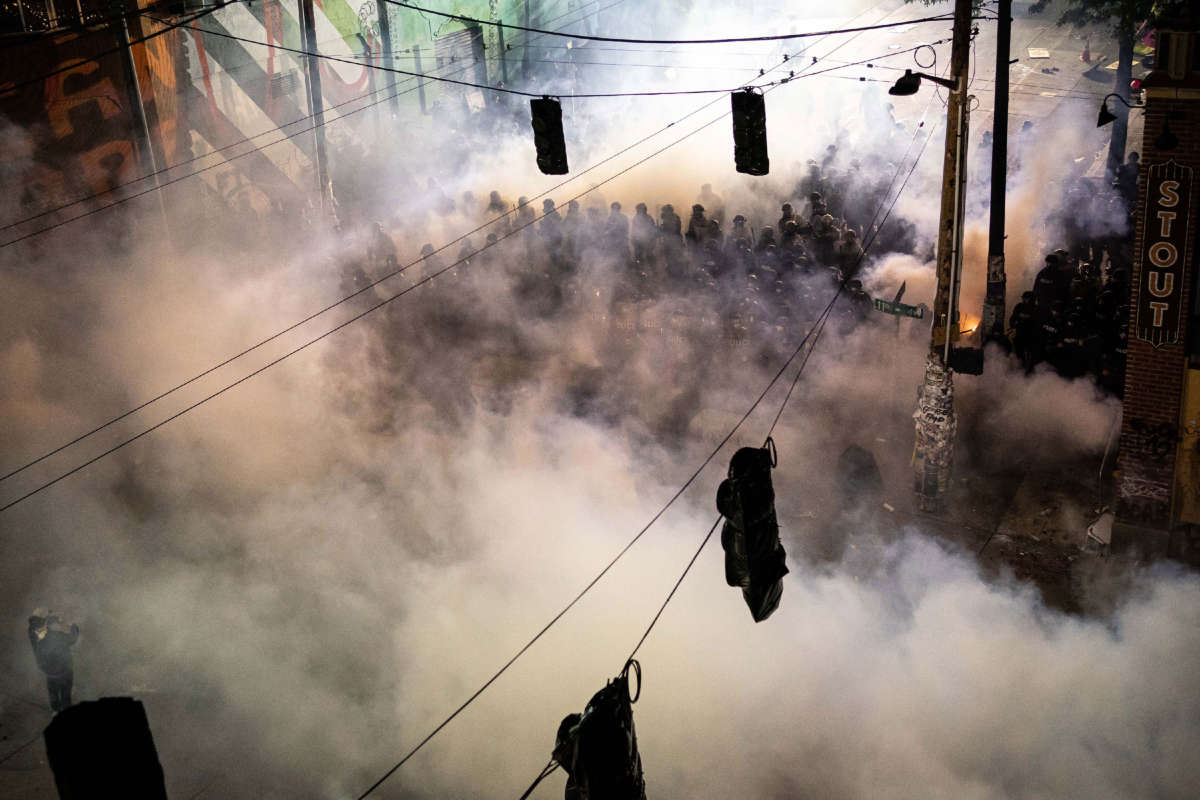In spite of assurances from Seattle leaders last week that there would be a 30-day ban on the use of tear gas, demonstrators were still subjected to the chemical agent in the city on Sunday evening.
Both Seattle Mayor Jenny Durkan and Chief of Police Carmen Best had emphasized that a temporary ban on tear gas would be in place while its efficacy in crowd control was investigated.
“It’s really important we’re looking at every aspect of force and how we’re utilizing it. We’ll review everything we’re utilizing,” Best said on Saturday.
“This review should better emphasize de-escalation tactics and incorporate recommendations from our accountability partners on the use of any crowd control techniques, including the use of tear gas and flash-bangs,” Durkan added.
The ban would not apply to pepper spray, flash-bang grenades, or other measures the Seattle Police Department uses to disperse or control large crowds. The ban on tear gas came about after criticisms of its use began to grow from Seattle residents.
Yet after the promise was made not to use tear gas for 30 days, Seattle police ended up using it anyway, during demonstrations in the city on Sunday evening. The police department’s official Twitter account even announced, just after midnight, that it had been “authorized” to use tear gas against those who were protesting racial inequalities in policing practices, prompted by the killing of George Floyd in Minneapolis two weeks ago.
Tear gas is not actually a gas at all: it’s more of a powder that is dispersed among crowds like an aerosol when it’s heated up, usually from canisters. Its use in war has been banned since the 1925 Geneva Protocol, although the United States at the time reserved the right, according to the agreement, to continue using it for domestic purposes.
Beyond causing pain in people’s eyes, as the name implies, tear gas can do other significant harm to a person’s body, as author and activist Anna Feigenbaum pointed out in an interview from 2018.
“Tear gas is most often associated with making people’s eyes stream with tears. But tear gas actually affects many parts of the body, and can cause vomiting, digestive problems, respiratory problems, skin irritation, and burns,” Feigenbaum said. “In severe cases, it can contribute to asphyxiation and heart attacks. It has also been linked to miscarriages and higher rates of cancer.”
Recently, tear gas was allegedly used to clear out a peaceful protest in front of the White House in order to allow President Donald Trump to get a picture of himself taken in front of a nearby church. The White House and the National Parks Service denied using the agent on demonstrators that day, but the canisters local news media found in Lafayette Square following the photo op were confirmed to be tear gas by a military explosives expert.
Join us in defending the truth before it’s too late
The future of independent journalism is uncertain, and the consequences of losing it are too grave to ignore. To ensure Truthout remains safe, strong, and free, we need to raise $41,000 in the next 5 days. Every dollar raised goes directly toward the costs of producing news you can trust.
Please give what you can — because by supporting us with a tax-deductible donation, you’re not just preserving a source of news, you’re helping to safeguard what’s left of our democracy.
